Sidecar Hospitality was founded in 2005 by Andrew Chun and Jan Wiginton. As of the 2018 Nightclub & Bar Show in March, Sidecar operates four acclaimed bars and restaurants in a highly competitive market, San Francisco.
It isn’t just the food, drinks and management that are keys to Sidecar’s success. Design is crucial to the group’s ethos.
As Chun said during his Nightclub & Bar Show presentation, good design drives success. He identified five key design steps for new and veteran operators to nail down. Sidecar’s four establishments—Press Club, Schroeder’s, Pacific Cocktail Haven, The Elite Café—acted as real-world examples for the importance of design to a hospitality venue’s success and longevity.
Chun’s key design steps for owners and operators are defining the concept; deciding on the budget; choosing a designer; gathering inspiration; and design development. I’ll focus on each of Chun’s steps using Sidecar venues as examples below.
Define the Concept
For this step, Chun isn’t suggesting an operator fleshes out their concept’s interior and exterior design. Rather, this exercise is all about boiling down the vision to venue category and target demographic. Chun recommends finding the answers to the following questions:
- Is the concept food, drink or bar heavy?
- How would the service style be defined?
- Is the target market a particular demographic (Gen X, Xillennial, Millennial, singles, families)?
- Where will the concept operate (downtown, specific neighborhood, etc.)?
Looking at Press Club, the answers to the above questions are apparent. Press Club is a wine bar that offers tapas and other small plates. It’s billed as San Francisco’s “most authentic wine tasting venue” and noted for its “sophisticated, social atmosphere.”
Read this: The Comprehensive Guide to Bar Renovation & Design
The target is clearly well-heeled Gen X to Gen Z (and likely fashionable, sociable Boomer) wine drinkers interested in socializing, sharing small plates, and being seen in a hot neighborhood. In this case, that neighborhood is South of Market (SoMa), which is known for upscale drinking and dining establishments.
Decide the Budget
Everyone’s budget is different. Some operators can afford to spare no expense, some must pinch every penny and do a lot of the buildout themselves, and many are somewhere in the middle. Regardless of where a person falls in the budgetary spectrum, Chun makes one thing crystal clear:
Hope is not a strategy.
Chun cautions owners and operators to be realistic about what things cost. If someone is undergoing a ground-up buildout or a down-to-the-studs renovation, they need to look at every financial avenue. Are there assets that can be leveraged? Do people owe money or favors?
Read this: Bar on a Budget, Part 2: What Kind of Owner are You?
The co-founder of Sidecar also says that the budget can be used to control the designer. Forcing them to stick to a strict budget can help rein them in and protect precious dollars and cents that will be needed elsewhere.
Pick a Designer
Selecting a designer prevents what Chun refers to as “design vomit.” That is, a design that isn’t cohesive and is a mess of elements that don’t really work well together or communicate in a consistent design language.
One reason that design is so important is that it can dictate atmosphere and energy. If a design isn’t unified or is off kilter, it can make guests feel the same way. That isn’t ideal for repeat, regular business or longevity.
Chun also has the following to say about designers, architects and contractors: they can all do part of the process, but none are excellent at executing each part. If an operator can afford it, a design firm that employs architects is ideal. Even better if they have a relationship with a reputable contractor. Of course, a reputation for bringing projects in on time (or early) and on (or under) budget is the best of scenarios. Anyone undergoing a new buildout or significant renovation/refresh should beware, says Chun, of leaving any design decisions to a contractor.
When deciding on a designer, architect and/or contractor, particularly if seeking out a design firm, it’s important that an operator makes certain candidates are in alignment with the budget and the concept’s style. Firms tend to have their project portfolios online, and these should be given serious consideration. Chun adds that home designer aren’t restaurant or bar designers and should be avoided; restaurants and bars should be designed by those with experience planning and building such spaces.
Read this: Design Disconnect: 21st Century Drinks, 19th Century Bars
Sidecar Hospitality has partnered with architecture and design firm BCV Architecture + Interiors for three of their projects. For Press Club, BCV, in the simplest of terms, transformed an underused basement into a sophisticated wine bar. The design features exposed wood design elements, wood furniture, dim lighting, and wine bottle elements that add light and color to offset the earthen tones inherent to the wood.
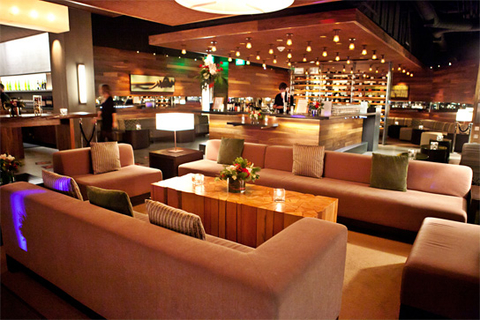
What BCV accomplished with Schroeder’s and the Elite Café is nothing short of remarkable. In the case of both, Sidecar had taken ownership of two venues with long histories. Schroeder’s, the original location of which opened in 1893 but was destroyed in an earthquake and fire (because sometimes nature engages in overkill) in 1906, is one of the oldest restaurants in San Francisco and the oldest German restaurant on the west coast. The Elite Café is 37 years old, first opening as Lincoln Grill in 1928 and transforming as a concept in 1981. It has been known as the gathering, dining and drinking spot for almost four decades.
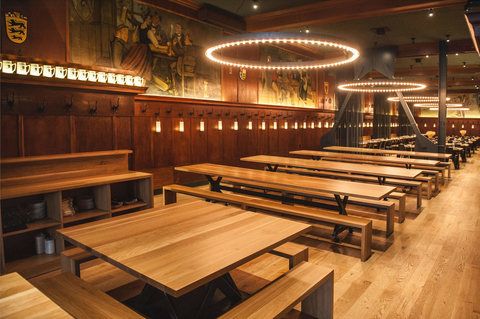
The design and architecture firm “preserved crucial aspects of [Schroeder’s] history and character while re-imagining the restaurant for a new generation to enjoy.” A rosewood bar and Hermann Richter murals were key design features for many decades and BCV took great pains to keep them intact while modernizing the space tastefully. The result is a resurgence in popularity, a new generation of loyal patrons, and modernization that doesn’t alienate anyone who remembers the original space. A refresh, in other words, that doesn’t ignore the importance of familiarity and comfort.
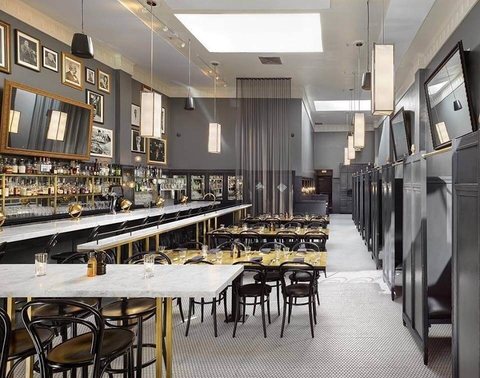
BCV worked similar magic at the Elite Café. Sidecar tasked the firm with a renovation that took roughly 10 months and required a refresh that was respectful of its history. BCV retained and refinished important elements, made period-correct revisions, added design cues that take advantage of the high ceilings, and added artwork that pays homage to local heroes of San Francisco (where the bar and restaurant is located) without deviating too sharply from the concept: a New Orleans restaurant and bar. Said Fran Miller in Walnut Creek Magazine of the final product: “Now, new ownership, a new interior, and a new executive chef provide new reasons for the Elite Café to retain its spot on ‘must’ lists.” A job very well done, then.
With each venue renovated and refreshed, BCV proved to Sidecar that they speak the same style language and can translate the vision for real-world results. While I can’t speak to whether they stayed on budget, one can assume that was the case if Sidecar continued to work with BCV.
Gather Inspiration
This is, at least to me, the fun part. Finding inspiration for a bar, nightclub or restaurant concept’s design is where operators get to flex their creative muscle.
Chun recommends that operators visit concepts that they like and taking pictures. Not only will the pictures help get the creative juices flowing, they’re valuable tools for communicating with designers when the time comes.
Read this: Bar Design: The Return of the Horseshoe
Of course, it isn’t just hospitality venues that can provide design inspiration. Chun has found inspiration while visiting retail stores, office buildings and even poking around all manner of websites. Anyone who has shopped for a car at a dealership knows that even those spaces are taking design more seriously. Operators should get out there and take note of design cues from all types of businesses and buildings.
Once inspiration has struck and taken hold, Chun suggests that operators think about a “statement piece,” a feature that guests will talk and post about. In this day and age, being Instagrammable is something all operators must consider.
Design Development
Since this step is the one that comes before breaking ground or knocking out the first wall, it requires every bit as much as attention to detail as finding (and communicating) a concept’s inspiration.
Development includes budgeting the design; ensuring the design is actually operational and will be functional; and understanding that the final design dictates the tone of operation.
Operators need to ask:
- Can I find something cheaper? (materials, hardware, lighting elements, etc.)
- Can I make something similar myself to save money?
- Is this the right amount of back-of-house space?
- Is this how the line should be set up?
- Is this where the service well should be placed?
- Have any pinch points/interruptions in flow been created?
An architect or designer, regardless of how many restaurants or bars they’ve created, may not know the real answers to the above questions. It’s wise for operators to look at plans from an operational standpoint to ensure the design is truly functional before the buildout has begun. Even better if the bar, kitchen and service teams are brought into the space and allowed to provide feedback. Operators can put tape down to map out the planned space and make sure it works.
Case Study: Cantina versus Pacific Cocktail Haven
People who keep tabs on the best bartenders, operators and venues in the business are likely familiar with Kevin Diedrich and Pacific Cocktail Haven (PCH). Diedrich, owner-bartender of PCH, partnered with Sidecar to purchase a neighborhood bar called Cantina and transform the space.
Again, Sidecar understood that a restrained hand is important when transforming a bar with a history. Award-winning bartender Diedrich was also acutely aware of the challenge. Cantina may not have a history that dates to the 1890s but taking over and closing a bar that has become the home away from home for so many patrons requires tact. Alienate the core regulars and the cloud of failure can hang over the new concept until its door close yet again, quickly and to devastating effect.
In the case of PCH, Sidecar didn’t partner with BCV. As reported by Daisy Barringer for Thrillist San Francisco, Chun contacted Diedrich after the group purchased Cantina and asked if he was interested in managing the place. Diedrich had been burned by a project that ended abruptly and was in no mood to endure such a situation again; he would need to be an owner, a Sidecar partner.
Chun, Wiginton and Diedrich came to co-ownership agreement with the owner-bartender as operating partner. However, there wasn’t a ton of money to renovate Cantina. Instead, Diedrich rolled up his sleeves and took on the project himself. And he did so rather impressively and in a way that many cash-strapped or fiscally conservative operators should consider emulating: he ran the Cantina space as a pop-up bar called Turnkey as he renovated the space that would eventually be named Pacific Cocktail Haven.
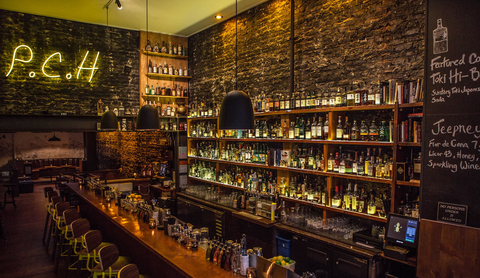
Diedrich would wake up early in the morning to do demolition. Around noon, he’d clean up after the demo. At 5:00 p.m., Turnkey was open for business. Oh, and this was the routine seven days a week, for four to six months. This allowed the regulars to return to their familiar watering hole and get a preview of what was to come. Doubtless, a pop-up with Diedrich’s name and reputation attracted new guests to the space as well, building anticipation and business for the day the bar opened its doors as PCH.
The demo also allowed the original space to reveal itself to Diedrich. It was during this time that he discovered a skylight that had been covered up when the space was Cantina. He also uncovered brick walls, and demoing to them had widened the space by roughly two feet. Essentially, Diedrich brightened and modernized a neighborhood bar without losing the feel and familiarity to which the regular customers had grown accustomed.
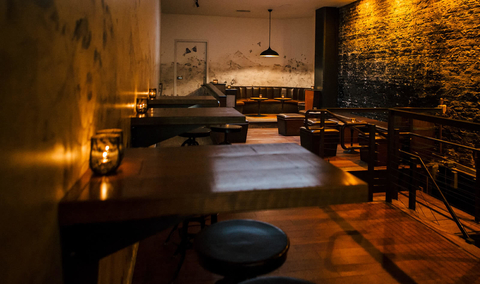
As Chun described the project at the 2018 Nightclub & Bar Show, Sidecar had purchased a bar in Union Square in San Francisco with plans to update the space. Instead, they ended up changing the entire thing. The sought to target “cocktail fanatics” and tourists, and while they reached that target they also maintained the regular following. The redesign and remodel took place with the space in operation, and revenue has gone up 100 percent since the project was completed.
Results will, of course vary from concept to concept. But following Chun’s steps can improve an operator’s chances of starting their buildout on the best possible footing.
